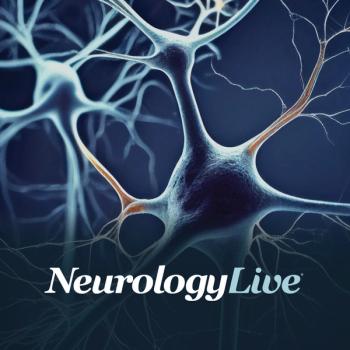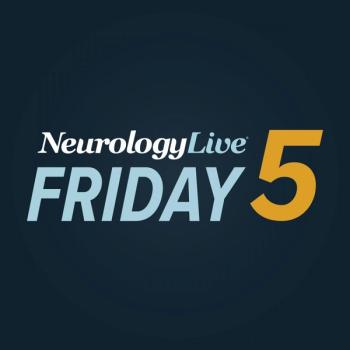
Concern Over Neuroinvasive Infections Rises as CDC Confirms First US Case of West Nile Virus Lineage 3
Key Takeaways
- WNV accounted for 95% of arboviral disease cases in 2023, with significant hospitalizations and deaths, highlighting its public health impact.
- The first US human infection with WNV lineage 3 was documented, indicating the virus's evolving nature and potential for severe illness.
West Nile virus poses increasing neurologic risks in the US, with new strains emerging and significant health implications for vulnerable populations.
Neurologic complications from West Nile virus (WNV) are a growing concern in the United States, as WNV accounted for 95% of the 2770 nationally notifiable arboviral disease cases reported in 2023, according to a CDC report published in MMWR.¹ These infections resulted in 2022 hospitalizations and 208 deaths, with most cases occurring between July and September.
Among the year’s most significant findings was the first documented US human infection with WNV lineage 3 (L3), a strain previously detected only in mosquitoes in Central Europe. The patient was coinfected with both L3 and the more common lineage 1 (L1), and became severely ill, requiring advanced diagnostic testing.1
“This was the first time WNV lineage 3 (L3) has been associated with human disease and identified in the United States,” said Hannah Padda, DVM, CDC, Epidemic Intelligence Service Officer, in an email interview with ContagionLive. “CDC described the case in a paper published in 2024 in the Emerging Infectious Diseases journal, reporting that the patient was coinfected with both L3 and the very common lineage 1 (L1).”2
While many West Nile virus infections are asymptomatic (80%) or cause only mild flulike illness, neuroinvasive symptoms are a serious concern, especially in older adults and the immunocompromised. About 1 in 150 individuals infected with WNV develop severe neurologic complications due to the viral infection in the central nervous system (CNS). Symptoms include high fever, severe headache, neck stiffness, confusion, stupor, tremors, seizures, muscle weakness or paralysis, and focal neurological deficits. About 10% of infected people die from complications such as flaccid paralysis, encephalitis, and meningitis.3
Since 1999, approximately 25,000 neurological complications and over 2300 deaths associated with WNV have been recorded in the US. In 2012, the US saw an epidemic of WNV with 5674 confirmed cases, of which 286 people died and over half developed neuroinvasive disease. In 2023, a significant proportion of the year’s 208 deaths associated with WNV were classified as neuroinvasive.
Following a mosquito bite, WNV replicates in skin cells in keratinocytes and dendritic cells before spreading to peripheral organs like the spleen and liver. A brief period of low-level viremia allows the virus to circulate and activate the immune response. In older populations, weakened interferon signaling possibly contributes to more severe outcomes. WNV can invade the CNS through several mechanisms, including blood-brain barrier disruption, infected immune cells crossing into the brain, or retrograde transport along neurons. Once in the CNS, the virus infects neurons, astrocytes, and microglia, triggering inflammation, cell death, which can lead to serious neurologic complications like encephalitis or meningitis.
Neuroimaging findings often help early diagnosis in WNV neuroinvasive cases. Patients may show altered mental status, tremors, focal neurologic deficits, or limb weakness while MRI findings often present T2 hyperintensities in the basal ganglia, thalamus, or brainstem. In cases of AFP, anterior horn cell involvement can lead to asymmetric limb weakness and hyporeflexia without sensory loss, which should raise suspicion for WNV, especially during peak transmission months. Because no specific antiviral treatment exists, neurologists play a critical role in recognizing WNV-related neurologic disease, ensuring early diagnosis, and providing care, particularly for patients with unexplained encephalopathy or sudden neurologic decline after mosquito exposure.3
Other arboviral infections remain relevant; Powassan virus disease ranked second in reported arboviral infections in 2023, with 49 cases, an increase from 2022's record high. La Crosse virus, meanwhile, was the most common cause of arboviral illness among children, with many cases classified as neuroinvasive.
The 2024 report also documented 3 WNV transmissions through organ transplantation, exemplifying the need for vigilance in donor screening. “WNV transmission from an infected organ donor is rare,” Padda said. “There are currently no required donor screening protocols for WNV, but most living donors and some deceased donors are screened for evidence of WNV infection. Health authorities and blood and organ donation organizations monitor and update their protocols to ensure the safety of the blood and organ supply.”4
Padda outlined several strategies to improve detection and reporting, noting, “Healthcare providers should consider arboviral testing for patients with acute febrile or neurologic illnesses when ticks and mosquitoes are active and regularly talk to their patients about preventing mosquito and tick bites.” She also urged clinicians to notify their state or local health department when they see patients with potential arboviral infections, and health departments to continue sharing this data with the CDC.5
As the geographic range and diversity of arboviruses evolve, the CDC urges clinicians and public health practitioners to remain alert. Preventive measures, including personal protection, mosquito control, and enhanced testing, remain the cornerstone of reducing morbidity and mortality.
REFERENCES:
1.Padda H, Jacobs D, Gould CV, et al. West Nile Virus and Other Nationally Notifiable Arboviral Diseases — United States, 2023. MMWR Morb Mortal Wkly Rep 2025;74:358–364. DOI: http://dx.doi.org/10.15585/mmwr.mm7421a1
2.Davis E, Velez J, Hamik J, et al. Evidence of Lineage 1 and 3 West Nile Virus in Person with Neuroinvasive Disease, Nebraska, USA, 2023. Emerging Infectious Diseases. 2024;30(10):2090-2098. doi:10.3201/eid3010.240595
3. Karim SU, Bai F. Introduction to West Nile Virus. Methods Mol Biol. 2023;2585:1-7. doi:10.1007/978-1-0716-2760-0_1
4.CDC. West Nile and Organ Transplantation. May 14, 2024. Accessed June 26, 2025. https://www.cdc.gov/west-nile-virus/causes/organ-transplantation.html
5.CDC. West Nile: Symptoms, Diagnosis, & Treatment. May 15, 2024. Accessed June 26, 2025. https://www.cdc.gov/west-nile-virus/symptoms-diagnosis-treatment/index.html
Newsletter
Keep your finger on the pulse of neurology—subscribe to NeurologyLive for expert interviews, new data, and breakthrough treatment updates.


































